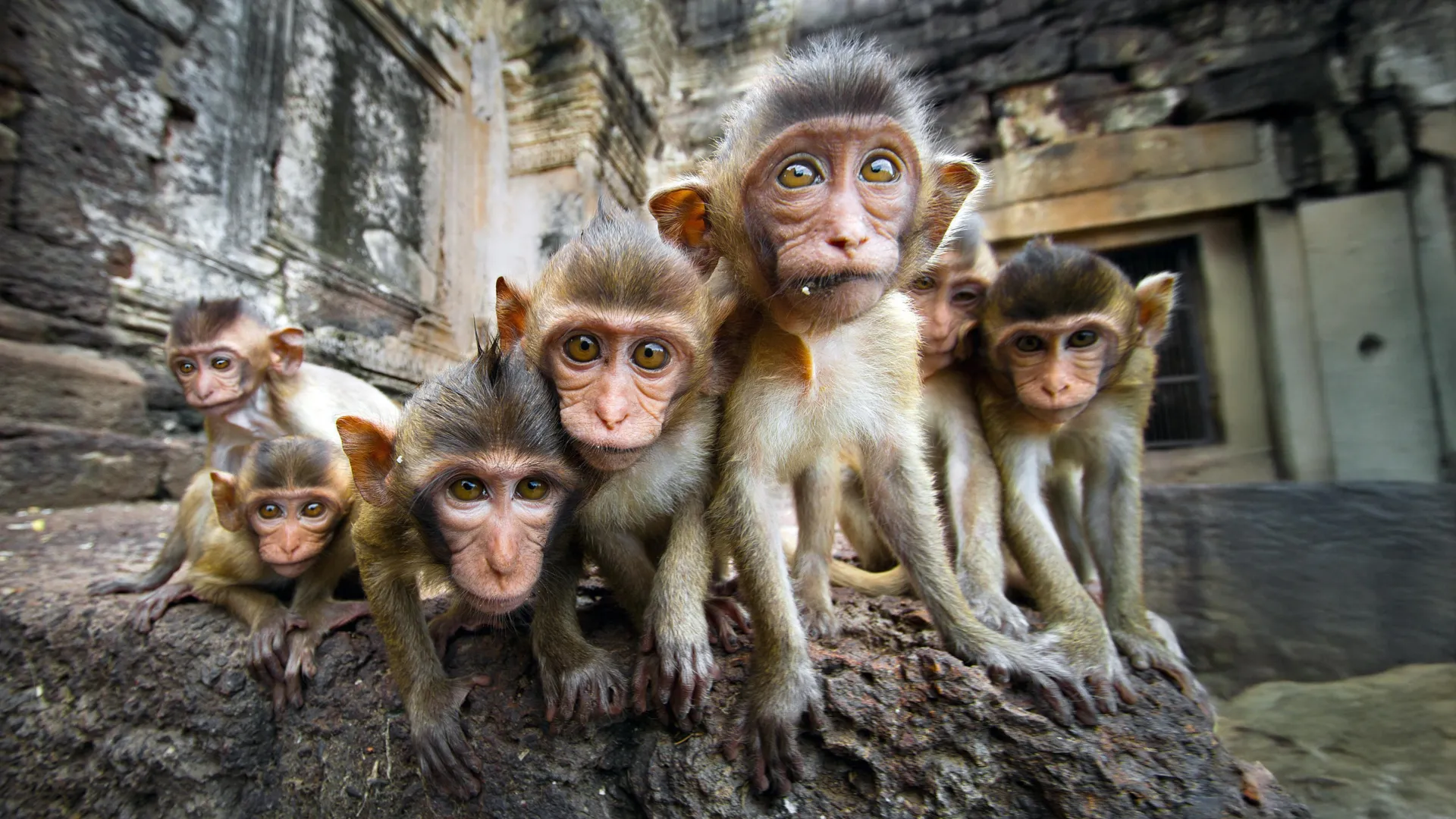Why monkeys—and humans—can’t look away from social conflict
Long-tailed macaques share some of our interests, study finds
- Date:
- July 9, 2025
- Source:
- Ohio State University
- Summary:
- Long-tailed macaques given short videos were glued to scenes of fighting—especially when the combatants were monkeys they knew—mirroring the human draw to drama and familiar faces. Low-ranking individuals watched most intently, perhaps for self-protection, while high-strung ones averted their gaze.
- Share:

Have you ever wondered what kind of video content would most grab the attention of monkeys?
A new study of long-tailed macaques suggests the monkeys seem to like some of the same kind of content that humans do: videos featuring aggression and individuals they know.
"Humans and macaques are both social animals who have a fundamental need to belong," said Brad Bushman, co-author of the study and professor of communication at The Ohio State University.
"It's not surprising that they both would be most interested in the video content that may help them navigate relationships in their groups."
The study was published online recently in the journal Animal Cognition. It was led by Elisabeth H.M. Sterck, professor of animal behaviour and cognition at Utrecht University in The Netherlands.
Researchers showed two-minute videos to 28 macaques that lived at a primate research center in The Netherlands. Each macaque saw multiple videos over time featuring monkeys in their group or strangers. Each individual video showed monkeys in one of four types of activities: conflict, grooming of each other, running, or sitting.
The researchers calculated how much time the monkeys spent looking directly at the screen and their reactions while watching.
Findings showed the macaques paid the most attention to videos featuring conflicts between monkeys. Running was the next most popular type of video. Grooming and sitting attracted the least attention.
It is notable that both macaques and humans seem to be attracted to videos featuring similar content, Bushman said.
"We have plenty of research showing the popularity of violent media with humans. Now we have some evidence that other primates might also be attracted to conflict and aggression in videos," Bushman said.
"From an evolutionary perspective, this makes sense. Both humans and other animals may be hardwired to pay attention to aggression because that is an adaptive response that increases survival," he added.
The other significant finding of the study was that the macaques watched videos featuring members of their own group more closely than those involving strangers.
"This indicates that gathering social information on group members is more important than getting information about strangers," Sterck said.
And seeing familiar faces on the screen isn't just something that's attractive to monkeys.
"When we as humans watch movies, we like to see actors we know - we like to see the stars playing in big movies more than we do actors who are not familiar to us," Bushman said.
Findings also showed that low-ranking and less aggressive macaques paid more attention than others to the videos.
"More dominant individuals can be more confident that aggression will not affect them - they don't have to pay attention to others as much," Sterck said.
"Lower-ranking individuals can become an aggression victim and that may be why they pay more attention to what others are doing in the videos."
In addition, high-strung macaques that were more easily stressed paid less attention to group members than those who did not act as stressed.
"We found that the gathering of social information from the videos differed with dominance rank and behavioral tendencies, which may reflect personality," Sterck said.
The research involved two separate groups of macaques that live at the Biomedical Primate Research Centre in Rijswijk, The Netherlands.
The "stranger" videos that the macaques viewed were those monkeys from a third out-of-view group.
In each enclosure, there is a corridor where the macaques are accustomed to participating in cognitive tests. There were four compartments where the monkeys could watch videos on a laptop. The subjects entered the corridor on their own volition, and were isolated from other monkeys of their multi-generational group during the two-minute videos.
"The macaques are very visual animals. Their eyesight is similar to that of humans and they are very interested in watching videos," Sterck said.
The researchers said the findings showed that humans share tendencies with our monkey relatives, including the attraction to videos with conflict.
"Even this brief exposure to aggressive media captured the attention of macaques in the study," Bushman said. "When you see this in some of our closest primate relatives, it is easy to see why humans are so interested in violent media."
Other co-authors of the study, all from Utrecht University, were Sophie Kamp, Ive Rouart, Lisette van den Berg, Dian Zijlmans and Tom Roth.
Story Source:
Materials provided by Ohio State University. Note: Content may be edited for style and length.
Journal Reference:
- Elisabeth H. M. Sterck, Sophie M. Kamp, Ive Rouart, Lisette M. van den Berg, Dian G. M. Zijlmans, Tom S. Roth, Brad J. Bushman. Reactions to social videos in long-tailed macaques. Animal Cognition, 2025; 28 (1) DOI: 10.1007/s10071-025-01970-1
Cite This Page: